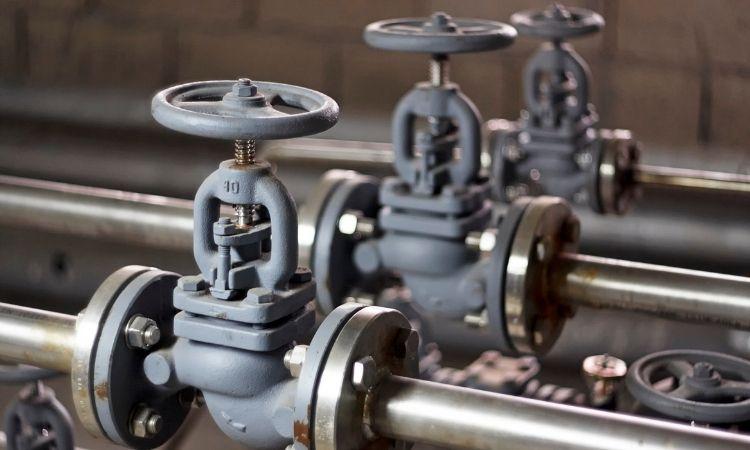The global industrial valves market size has been on a steady growth trajectory, reaching approximately USD 77.13 billion in 2023. Projections indicate a continued upward trend, with the market expected to grow at a compound annual growth rate (CAGR) of 4.6% between 2024 and 2032, reaching a value of USD 115.95 billion by 2032. Industrial valves are integral components in a wide range of industries, including oil and gas, water and wastewater management, chemicals, power generation, and more. They play a crucial role in controlling the flow of fluids and gases within various systems, ensuring efficient operation and safety. In this blog post, we delve into the key trends shaping the future of the industrial valves market and explore their implications for the industry.
Automation and Digitalization
One of the most significant trends driving the evolution of the industrial valves market is the increasing adoption of automation and digitalization. Automation technologies have revolutionized industrial processes by enabling the remote monitoring and control of valve systems. This has led to improved operational efficiency, reduced labor costs, and enhanced safety in industrial environments.
The integration of Internet of Things (IoT) and smart technologies has further accelerated this trend, allowing for real-time data collection and analysis. Smart valves equipped with sensors and actuators can communicate with central control systems, enabling predictive maintenance and optimizing performance. This proactive approach to maintenance helps minimize downtime and extends the lifespan of industrial valve assets.
Moreover, digitalization has facilitated the implementation of advanced control strategies, such as proportional-integral-derivative (PID) control and fuzzy logic, enhancing the precision and responsiveness of valve systems. These technological advancements are driving the demand for intelligent valve solutions across various industries, paving the way for a more interconnected and efficient industrial ecosystem.
Environmental Regulations and Sustainability
Another significant trend shaping the industrial valves market is the increasing focus on environmental regulations and sustainability. Governments worldwide are implementing stringent regulations to reduce emissions, conserve resources, and promote environmental sustainability. As a result, industries are under pressure to adopt eco-friendly practices and technologies, including in their valve systems.
Valve manufacturers are responding to these regulatory requirements by developing environmentally friendly valve solutions. This includes the use of low-emission materials, such as low-lead brass and stainless steel, to minimize environmental impact. Additionally, there is a growing emphasis on energy-efficient valve designs and technologies, such as low-friction seals and optimized flow profiles, to reduce energy consumption and carbon footprint.
Technological Advancements
Technological advancements are driving innovation in the industrial valves market, enabling the development of more robust, efficient, and reliable valve solutions. One of the notable advancements is the introduction of new materials for valve construction. Traditional materials like cast iron and carbon steel are being replaced by high-performance alloys, ceramics, and composites that offer superior corrosion resistance, temperature tolerance, and mechanical strength.
Additionally, advanced manufacturing techniques, such as additive manufacturing (3D printing), are revolutionizing valve production processes. 3D printing allows for the fabrication of complex valve geometries with reduced lead times and material waste, enabling greater design flexibility and customization. This technology is particularly beneficial for prototyping and small-batch production of specialized valve components.
Market Trends and Growth Opportunities
The industrial valves market is witnessing several trends that are creating growth opportunities for manufacturers and suppliers. One such trend is the growing demand for industrial valves in emerging markets, particularly in Asia-Pacific and Latin America. Rapid industrialization, urbanization, and infrastructure development in these regions are driving the demand for valves across various end-user industries, including oil and gas, water and wastewater management, and power generation.
Moreover, there is an increasing focus on process automation and efficiency in industries worldwide. Industrial automation technologies, including advanced valve solutions, are being adopted to streamline operations, improve productivity, and enhance safety. The ongoing digital transformation of industries, driven by Industry 4.0 initiatives, is expected to further fuel the demand for intelligent valve systems that can integrate seamlessly with smart factories and IoT-enabled infrastructure.
Challenges and Future Outlook
Despite the promising growth prospects, the industrial valves market faces several challenges that need to be addressed to sustain long-term growth and competitiveness. One such challenge is the high cost of advanced valve technologies, including smart and automated valve systems. The initial investment required for these technologies can be prohibitive for some end-users, particularly small and medium-sized enterprises (SMEs).
Another challenge is the shortage of skilled labor to operate and maintain advanced valve systems effectively. As valve technologies become more complex and sophisticated, there is a growing need for trained personnel who can troubleshoot issues, perform preventive maintenance, and optimize system performance. Addressing this skills gap through training and education programs will be critical to ensuring the successful implementation and adoption of advanced valve technologies.

